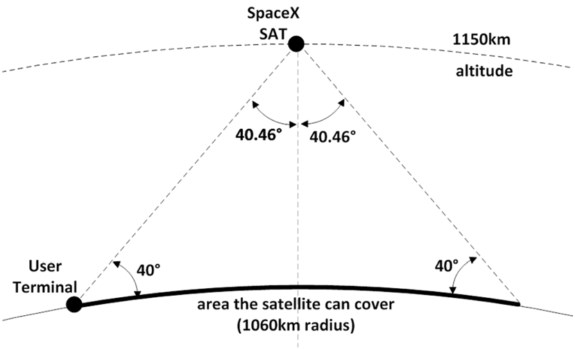
While SpaceX already has a profitable orbit delivery system with its Falcon 9 rocket, we now receive a bit more information about how SpaceX plans to bankroll its space adventure. A filing with the US Federal Communications Commission (FCC) reveals SpaceX is asking permission to put a massive communications network into low-Earth orbit.
SpaceX aims to provide a commercial broadband service, with an initial network of 800 satellites capable of covering areas of the globe from 15 degrees north to 60 degrees north, and from 15 degrees south to 60 degrees south.
This service would cover most of the United States, but the end-goal is to launch a total of 4,425 satellites, which would have the ability to provide ubiquitous global service. Each of these satellites measures about 4.0m x 1.8m x 1.2m and weighs 386kg.
The operating lifetime is rated at just five to seven years per satellite, after this they will burn up in the Earth's atmosphere. It sounds like an extremely short lifespan, but a quick Google search learns this is a fairly normal operating life for a satellite.
To get the party started, SpaceX wants to send up 1,600 satellites at one orbital altitude, then follow up with another 2,825 satellites placed in four shells at different altitudes.By placing each satellite at an altitude of just 1,150km to 1,275km, the network will be able to achieve a decent latency while also offering extremely high bandwidth. Business Insider analyzed the plans and writes that once fully optimized through the final deployment, the SpaceX satellite network will be able to provide bandwidth of up to 1Gbps per user, with a target latency of 25-35ms. This broadband Internet will be available all over the world, and is designed with cost-effectiveness and reliability in mind.
"With deployment of the first 800 satellites, SpaceX will be able to provide widespread U.S. and international coverage for broadband services," SpaceX wrote. "Once fully optimized through the Final Deployment, the system will be able to provide high bandwidth (up to 1 Gbps per user), low latency broadband services for consumers and businesses in the U.S. and globally."
The low-cost launch capability of SpaceX could make the project a reality. Musk previously estimated it would take about $10 billion to get the satellite Internet service off the ground. It's truly massive in scope considering the current number of operating satellites in orbit is just 1,419. In the FCC filing, SpaceX explains its satellite network could bring high-speed Internet to not just the developed world, but also the 57 percent of the human population still living without Internet because connectivity is not present or not affordable.
Musk also dreams of putting a similar satellite Internet constellation around Mars, but of course, the Martian colony needs to get off the ground first.
